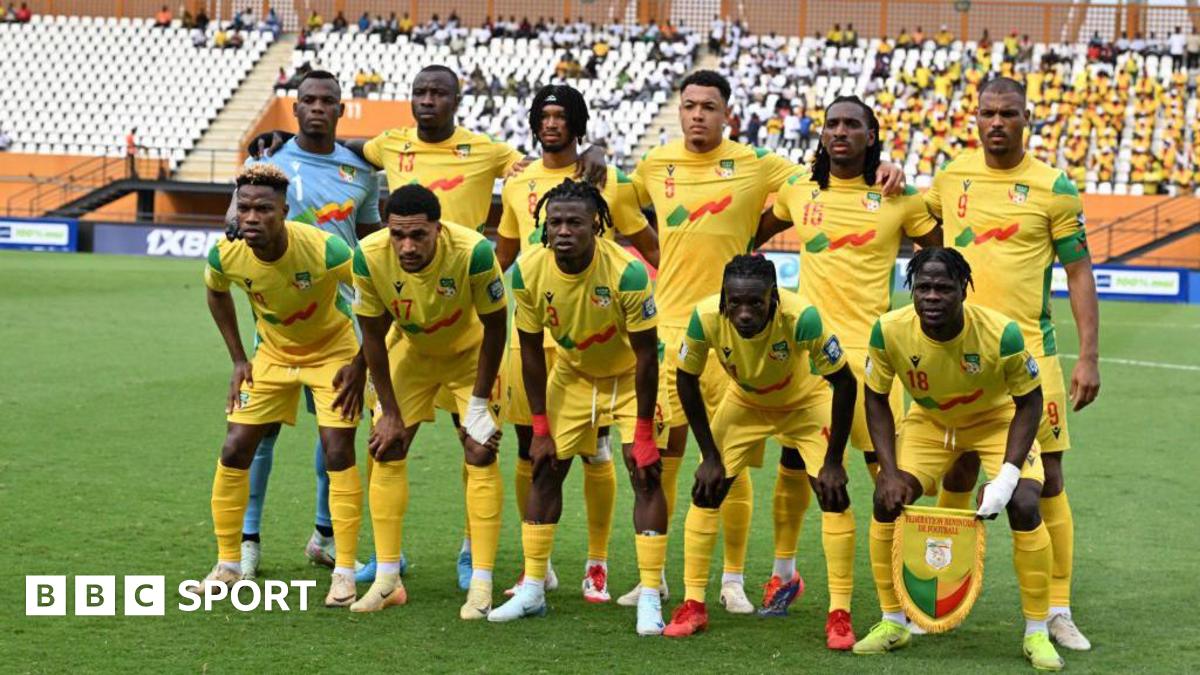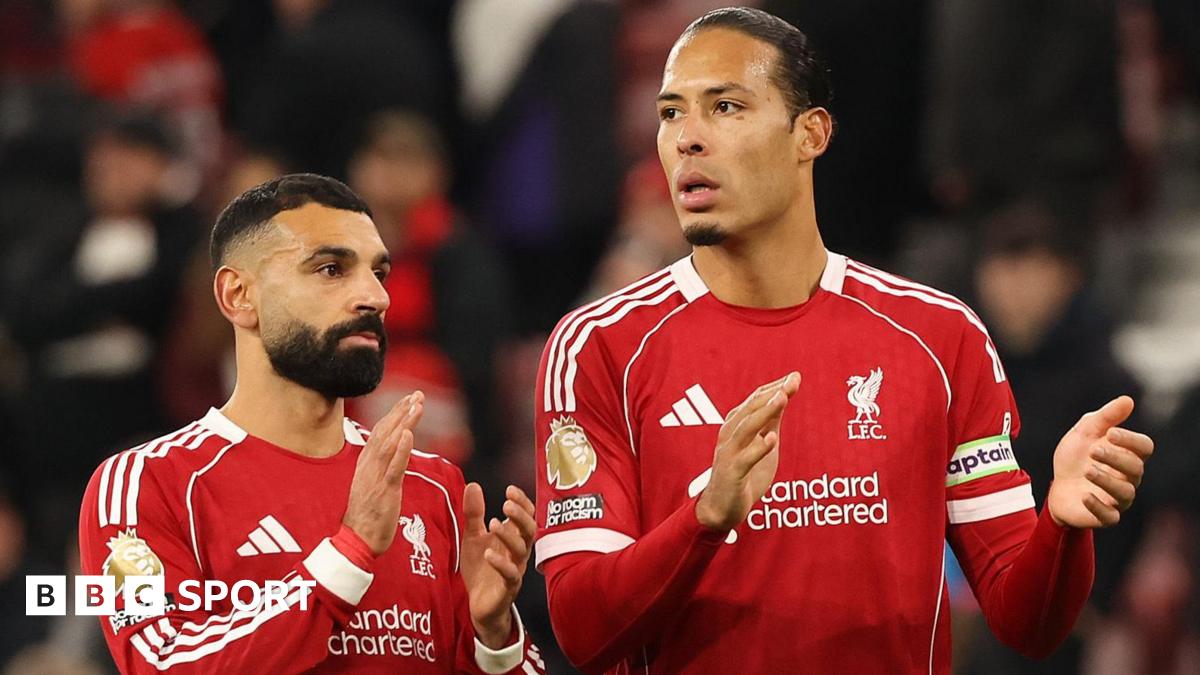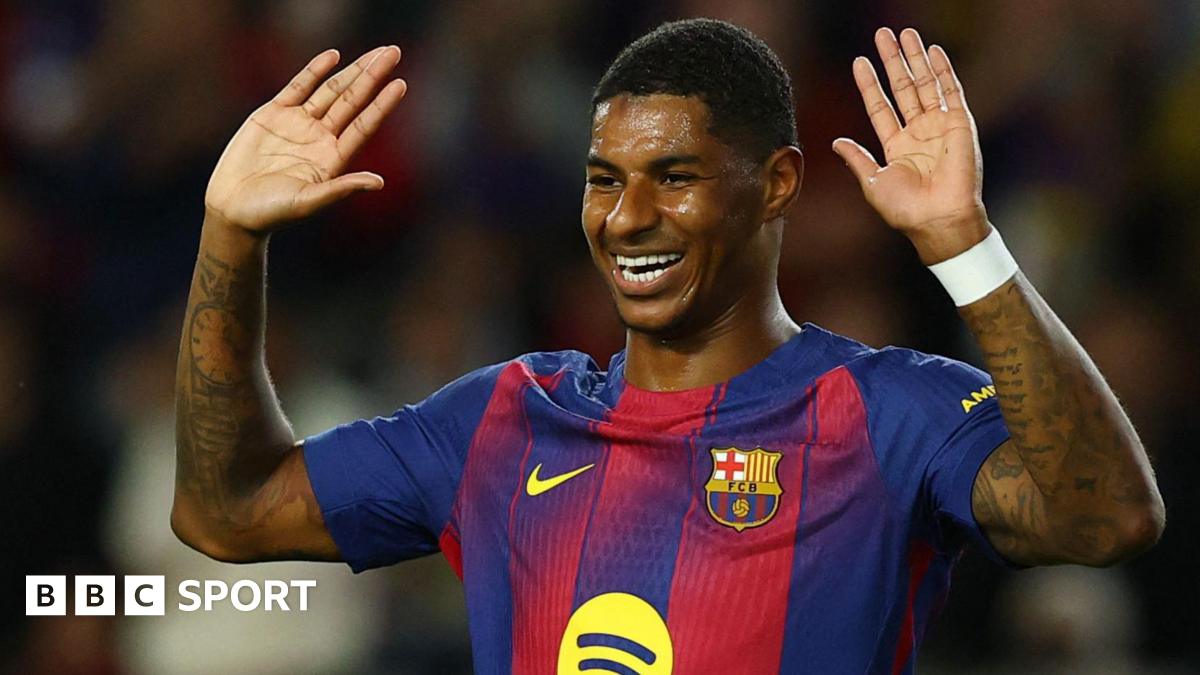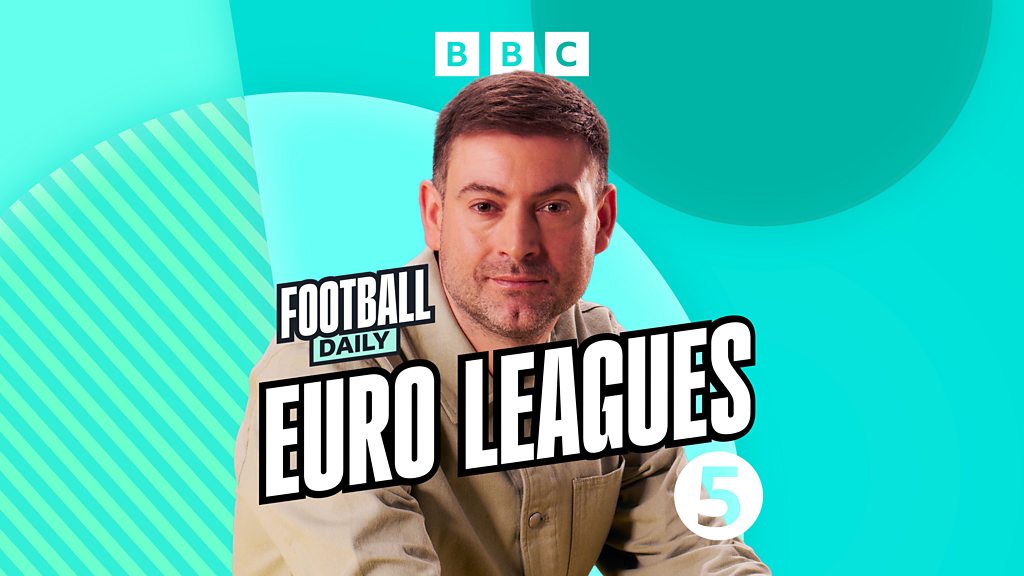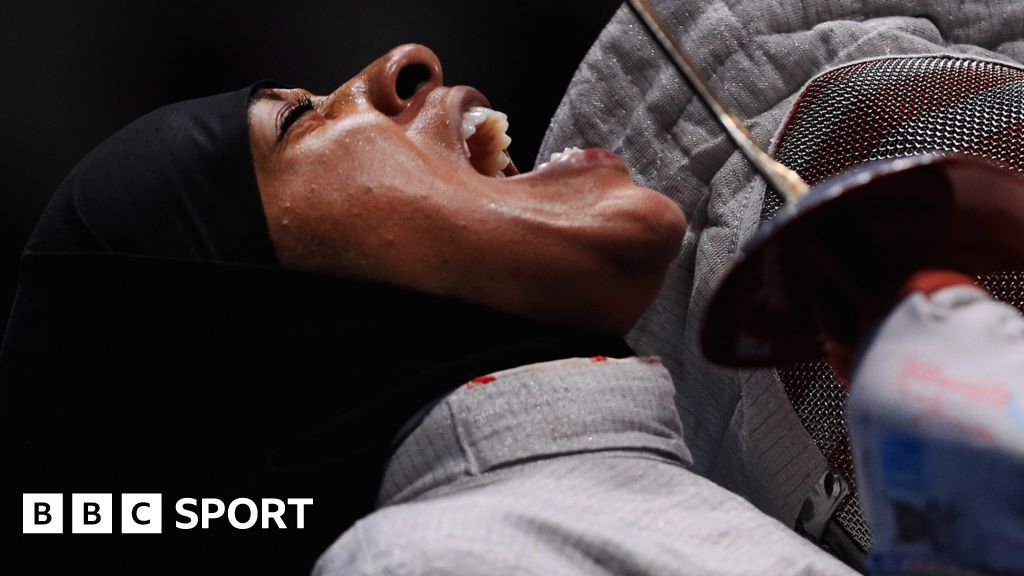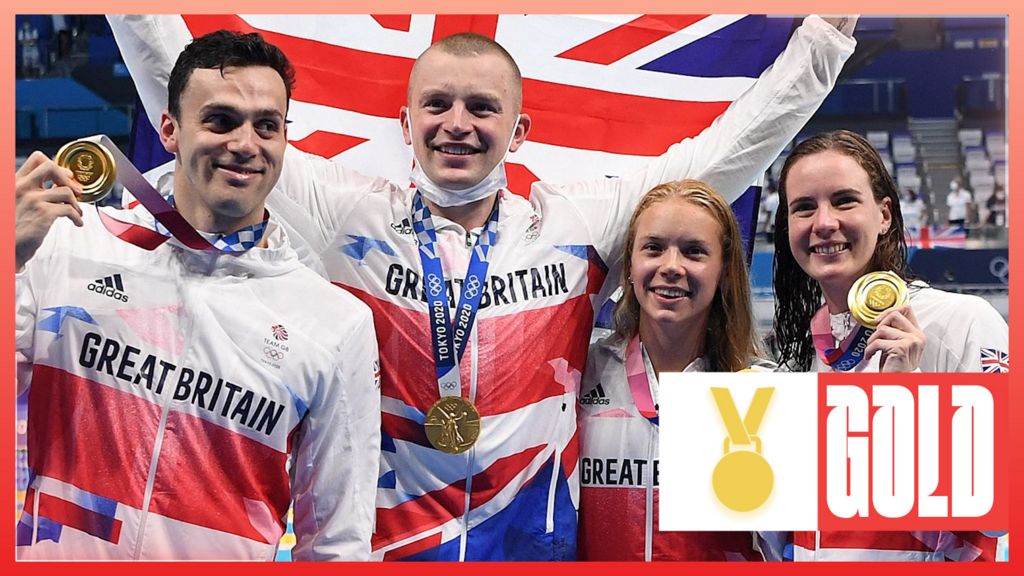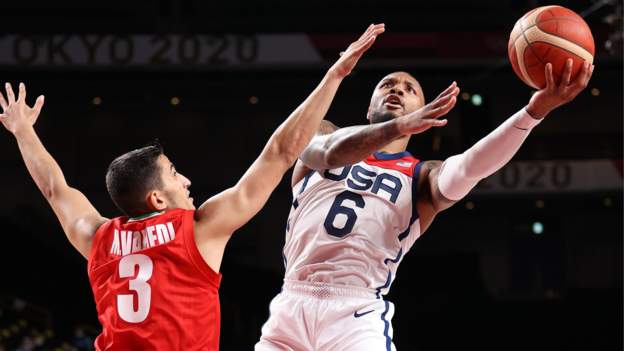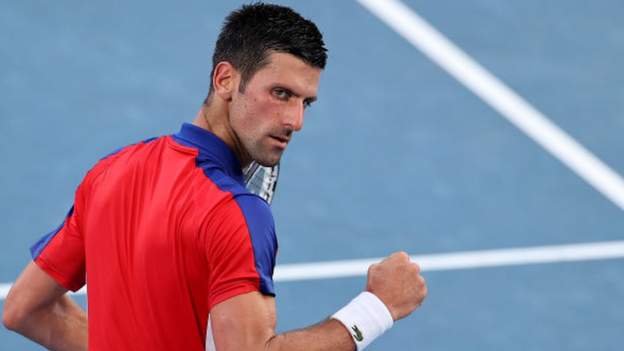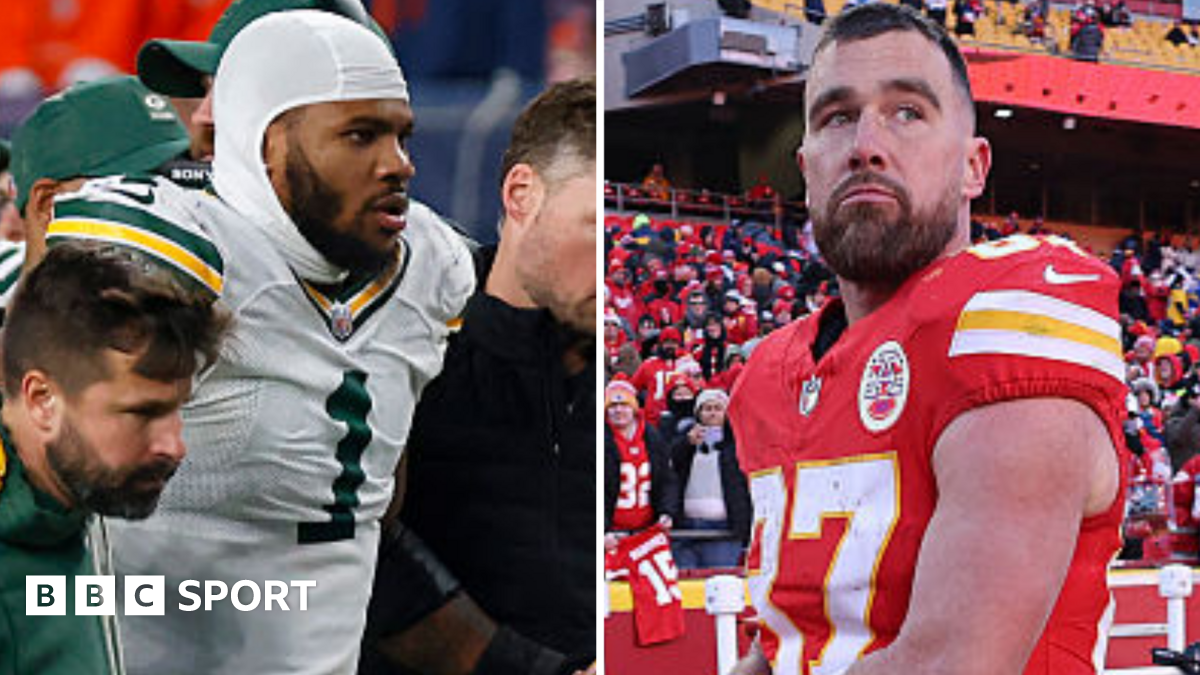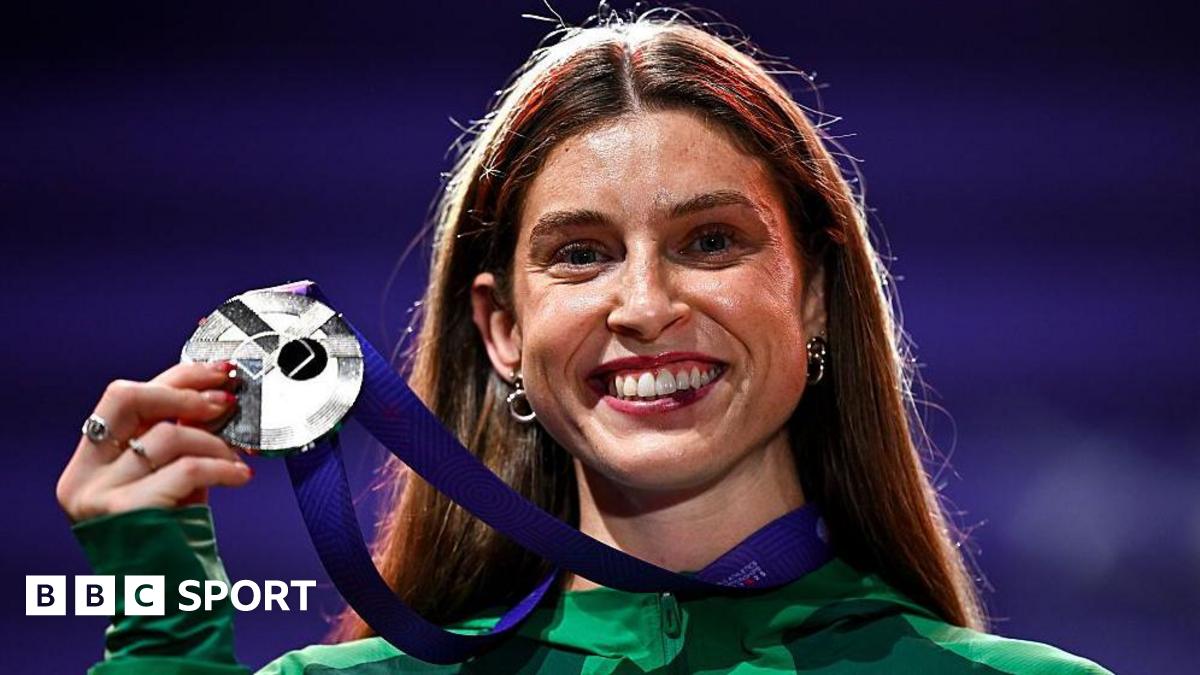“The ban on the hijab [a type of headscarf that covers the head and neck, but leaves the face clear] is the consequence of two discriminations: it is islamophobia, but also gender discrimination,” says Veronica Noseda, who plays football for Les Degommeuses, a Parisian football club set up to fight discrimination.
Assile Toufaily, who moved to Lyon in 2021 having played football at international level for her native Lebanon, agrees.
“It’s not really about the French society, it’s the government,” she says.
“There is a hate on Muslim people during these last few years in France and it’s shown in sport.”
This summer and the arrival of the Olympics in Paris will be the clearest sporting demonstration of a distinctive and divisive French concept.
Liberte, egalite, fraternite, which first appeared during the French Revolution, may be the most famous expression of what France aspires to. It appears at the front of the constitution, on coins, on stamps and on public buildings.
Less famous, and harder to translate, is another key tenet of the French republic: laicite.
Most often translated as secularism in English, laicite does not stipulate that France’s people should drop any religious customs or symbols, but, instead, that state and public institutions should be expressly free of them.
It is an idea that is keenly contested in France, particularly in the wake of a raft of terrorist attacks over the past decade and a parallel resurgence in far-right politics.
French President Emmanuel Macron has found himself defining the term again and again.
“The problem isn’t laicite,” he said in a speech in October 2020.
“Laicite in the French Republic means the freedom to believe or not believe, the possibility of practising one’s religion as long as law and order is ensured.
“Laicite means the neutrality of the state. In no way does it mean the removal of religion from society and the public arena. A united France is cemented by laicite.”
A 2004 law attempted to add some clarity to the concept, banning “ostentatious” religious symbols from state schools, without naming specific examples.
While Sikh turbans, Jewish kippah and large Christian crucifixes have been interpreted as falling the wrong side of laicite, most of the debate has focused around head coverings among the largest Muslim population of any nation in Western Europe.
In September, French sports minister Amelie Oudea-Castera – a former professional tennis player who lost to Martina Hingis in the Wimbledon juniors semi-final in 1994 – confirmed that the French Olympic team, as an institution representing and funded by the French public, is bound by laicite.
“It means absolute neutrality in public services,” she said. “The France team will not wear the headscarf.”
Athletes from other nations will be free wear religious symbols in the Paris 2024 athletes’ village as they wish. However members of the French team, if they are to abide by their nation’s rules, can’t.
The stance has been criticised by some international bodies.
“No-one should impose on a woman what she needs to wear or not wear,” said a spokesperson for the United Nations Human Rights Office., external
“Prohibitions on the wearing of religious headscarves in public spaces violate Muslim women’s rights,” added human rights charity Amnesty International.
In France however, the ban carries considerable support.
“It is a complicated and very, very sensitive issue,” says Sebastien Maillard, an associate fellow at think tank Chatham House who has reported on French politics and society for much of his career.
“When I moved from Paris to London, that was one of the main differences. In the United Kingdom religion is displayed quite comfortably, whereas in Paris it is often seen as something more provocative.”
Maillard points to another, smaller, controversy involving Paris 2024’s exclusion of religious symbols.
In March the Game’s official poster – a stylised image of Paris’ landmarks coming together to form a stadium – was unveiled.
The artist omitted the golden crucifix that stands on top of the Hotel des Invalides, sparking discussion as to how strictly the Games – which will the cost French taxpayers several billion euros – stick to the principles of laicite.
“The debate today more often focuses around a Muslim community, one that wants to be fully part of French society but also follow religion in its own way,” says Maillard. “We have this debate over and over about how that fits.
“The French republic was partly founded on a rejection of Catholicism and it feels threatened whenever religion impinges on it. There is a strong fear, particularly among older generations, of religion exerting influence over society and the state.”
The debate plays out in areas where those demographic differences are most pronounced – in education, but also sport.
During last year’s period of Ramadan – a month-long fast observed between sunrise and sunset by Muslims – the French Football Federation (FFF) sent out an edict to referees not to pause matches to allow players to break their fast, saying these interruptions “do not respect the provisions of the statutes of the FFF”.
This year, with Ramadan coinciding with an international break, the FFF confirmed that it would not alter the timing of meals and practices to accommodate Muslim players, effectively preventing them from fasting while in camp with France’s age-grade and senior teams.
Lyon midfielder Mahamadou Diawara left France Under-19s’ get-together, reportedly because of the restrictions., external
Another talented prospect in another sport, basketball player Diaba Konate, who has represented France at under-23 level, has left for the United States, saying the ban on her wearing the hijab has left her “heartbroken”., external
Even in low-level local matches, female Muslim players are usually banned from wearing a headscarf, on the basis that the leagues are organised and run by public bodies. Protective scrumcaps – a work-around solution some players have attempted – have also been deemed incompatible with the rules by some referees.
The application of laicite to sport’s grassroots means that hijab-wearing athletes have usually compromised or dropped out before reaching the biggest stage.
But this summer will set their dilemma in the starkest terms: choosing between wearing a national team kit at Paris 2024 and an expression of a personal faith.
Elsewhere in sport, expectations have changed.
Morocco defender Nouhaila Benzina made history at last summer’s Women’s Football World Cup.
Following Fifa’s 2014 rule change to allow the wearing of head coverings for religious reasons, she became the first person to wear a hijab at the World Cup when she took to the field against South Korea.
At Rio 2016, fencer Ibtihaj Muhammad made headlines when she became the first American to compete at the Olympics while wearing a headscarf. She was later one of the athletes used to launch a hijab made specifically for sport by a global American sports brand.
Another athlete to win a medal at those Games while wearing a head covering – Iran’s taekwondo player Kimia Alizadeh – has since emigrated to Germany, where she criticised the Iranian government’s policy of “compulsory hijab”.
She competed at the Tokyo Games in 2021 under the flag of the Refugee team and without a religious head covering.


